Which room is your new piece of furniture going to call home?
How does your new piece of furniture fit with your room décor?
Where in your room will
your new piece of furniture
go?
Does your new piece of furniture need to have any specific features?
Does your new piece of furniture need to make it easy to watch TV?
Beyond all those comes the question of comfort.
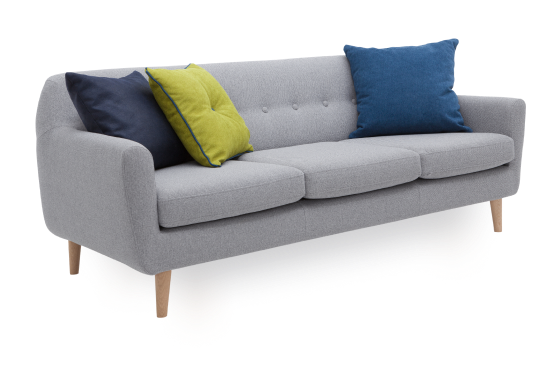
Choosing a comfortable sofa or set of home theater seats often involves visiting a store and trying them yourself. However, if you plan to buy online, you can learn lots of things that will help you make your decision.
One of the critical factors that determine the comfort of a piece of seating furniture is the filling. You’re probably familiar with choosing a new mattress for your bed based on what’s inside it, but you might not have done so for a new sofa or home theater seats before.
Luckily, what you need to consider when shopping for new seating is similar. In modern home furniture, you’ll often have the choice between foam core or pocket coils.
Let’s look at how you can ensure you get the best, most comfortable seats you can.
PROS & CONS of Foam Cores and
Pocket Coils
We’re going to look at both foam cores and pocket coils in greater detail as we go through this guide. However, you can find a quick summary of the pros and cons of both in the table below.
Pros
- personalized space! Shape themselves to your shape as you sit, giving you a personalized space!
- excellent support and pressure Provides excellent support and pressure relief if you need to alleviate things like back pain while sitting.
- soft, enveloping feel Have a soft, enveloping feel.
- can isolate motion Some types of foam can isolate motion, meaning if your kids are wriggling around on the same large cushion, this won’t impact you.
Cons
- Foam will sag Eventually, foam will sag, meaning you may need to replace your cushions or even the whole piece of furniture.
- sensitive to cold temperatures Can also be sensitive to cold temperatures, making them sturdy and uncomfortable.
- can be expensive Some types of foam can be expensive.
- Can make you feel hot Can make you feel hot, so it may not be ideal in a small home theater space, if you live somewhere hot, or you struggle to cool and air condition your home.
Pros
- wide range of budgets Available for a wide range of budgets.
- exceptional support for aches and pains Some types of pocket coils offer exceptional support for aches and pains, as well as comfort.
- Feel springy and bouncy Feel springy and bouncy as they react to you getting up and down off them.
- cheaper than a high-quality foam Good quality pocket coils can sometimes be cheaper than a high-quality foam, such as memory foam.
- More resilient than foam More resilient than foam, and will keep their shape for longer, reducing the potential of needing to buy a replacement.
Cons
- Lead to Bad Posture Cheaper pocket coil furniture may feel very soft and lack sufficient support for those who want to relieve back and joint pain and enjoy comfort. Using cheaper pocket coils may also lead to bad posture.
- more expensive The best types of pocket coil tend to be more expensive than the best memory foam furniture varieties.
- motion isolation Typically, only the most expensive pocket coils offer motion isolation, while this is a standard feature of memory foam seats.
As we can see, there’s much to consider around the pros and cons of foam cores and pocket coils. In the rest of this article, we’ll look in further detail at both types of cushions to ensure you can make an informed decision around which one to buy.
Foam Core
Before foam, furniture manufacturers would use a variety of materials for things like cushions and mattresses. Although pocket coils have been used in mattresses since at least 1900, it took longer for them to become prevalent in other cushioned products.
In sofa cushions, a variety of materials were used before the invention and commercial production of foam:
which is dried out palm grass
leaves twisted into a durable rope
such as down. Curled and
chopped feathers were also
common as a cheaper alternative
which is a specific type of
seaweed found around
the coastlines of Europe
which was and is typically
horsehair. However, horsehair was
traditionally expensive, so hog hair
was used as a cheaper alternative
While some of these materials are still in use in furniture production and upholstery today, you’re more likely to find them in smaller cushions than as part of the main structure of a sofa or seat.
History of Foam
Foam was first developed in Germany in 1937 but did not come into mainstream commercial use within furniture until the 1950s.

Foam was first developed in Germany in 1937
But did not come into mainstream commercial use within furniture until the 1950s
The primary motivation at this time was to create something fast and straightforward to manufacture. As society changed and TVs became a household essential, demand for seating grew significantly.
As such, foam production, which could be manufactured and put into furniture cheaply, was a solution allowing the global supply of comfortable seats and sofas to keep up with demand.
Foam felt like a huge step forward in the mid-20th
century, particularly for people who had never owned or
could afford a soft piece of furniture aside from a mattress.
However, the mass production of foam furniture meant the quality was often low. This low quality meant cushions would usually need replacing after a brief period so people could continue enjoying the benefits of their foam furniture.

Production of Foam furniture

Quality of Foam furniture
The quality of foam would continue to improve, becoming more durable and longer-lasting. While this pushed the price of furniture higher, the better quality foam used meant this still represented good value.
The most significant development in foam would later come with the pioneering of memory foam, which, although developed by NASA in the 1970s, did not become available for commercial use until 1991.
What is a Foam Core
in Seating?
The first sofas that used foam in their seats were often literally just a piece of foam with the cushion cover wrapped around them.
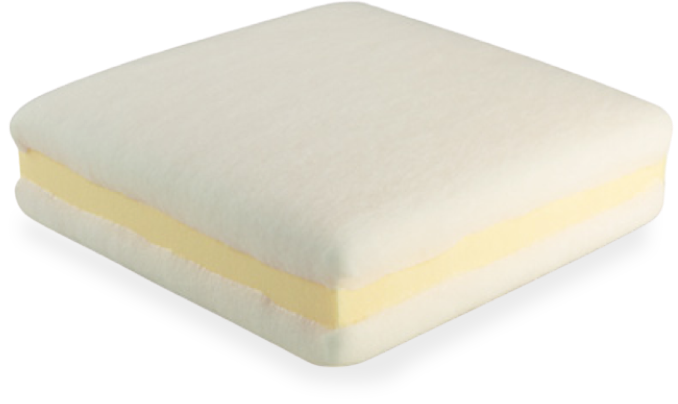
A foam core is slightly different; the keyword here being “core.”
Different manufacturers use different fiber wraps, but it is common for these wrappings to be hypoallergenic. Such a feature means as many people as possible can buy them and use them in comfort. Hypoallergenic wrappings also tend to be cheaper than some alternatives, such as down or feather, which may cause an allergic reaction and be more expensive.
The use of the fiber wrap can enhance the foam’s qualities while also making it more durable and longer-lasting.
Types of Foam
Choosing a foam core isn’t as simple as just saying, “I want foam.”
There are several foam varieties, and you can choose the best one for you, depending on:
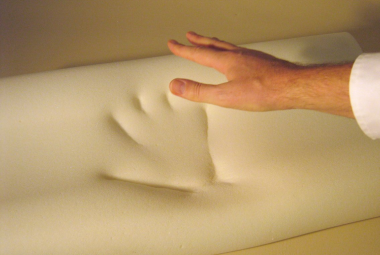
Firmness

What your cushions or furniture will be used for

Durability and resilience
What is Memory Foam?
Memory foam is one of the most popular and sought-after types of cushion in modern furniture. We didn’t include it above as it warrants a dedicated section itself.

NASA first created memory foam in the 1970s.
Upon making Memory foam technology available for public and commercial use, NASA kickstarted a revolution around memory foam use in furniture.
In the early 90s, it was most common for memory foam mattresses to be used in hospitals. Still, it didn’t take long before they became a staple of the furniture industry, both in mattresses and sofa cushions.
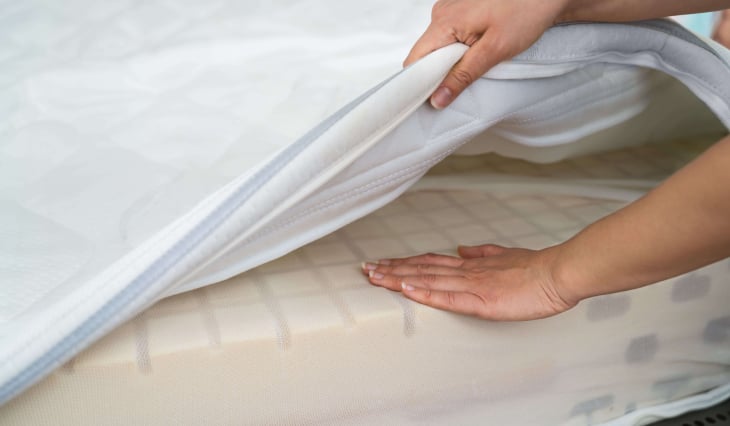
In general, all memory foam cushions contour around your body, providing support without any feeling of pressure, resistance, or push back against you. However, there are several ways to manufacture memory foam, and as a result, several types of memory foam products
It’s common for memory foam products to consist of more than one foam layer, typically two but sometimes up to five.
However, higher numbers of layers are more often found in mattresses rather than cushions. It’s also common for memory foam cushions to include other materials to help prevent overheating and improve comfort even further.
Here is a summary of some of the most common types of memory foam you might find when shopping for a new sofa:
Foam Cores’
Support and Density
The support you get from a foam core will depend on both the type of foam and the wrapping used. Many foam cores, not just memory foam, will include both a comfort layer and a support layer. The support layer will often be higher density and more robust, so it lasts longer, while the comfort layer is softer.
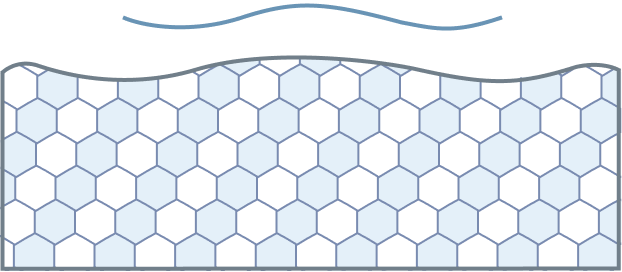
If you choose a sofa or home theater seats with a memory foam core, remember if you don’t sit straight, the foam will mold around your body in what seems an irregular shape.
This feature means you’ll need to sit in the same way each time to take advantage of the contouring, but even if you want to change your seating position, your foam cushion will still react.
While foam cores offer good support, how foam responds to your body means it may feel like “dead” support, as you won’t get the responsiveness you would from pocket coil spring cushions.
Cost
The cost of furniture with a foam core will depend on the type of foam used.
The cheapest foam core cushions will often be less expensive than the most affordable pocket coil spring equivalent. However, high-quality memory foam cushions may be costly.
Durability of
Foam Cores
Even with heavy use, high-density foam core cushions should last up to 12 years. For comparison, a high-quality memory foam mattress will typically last 8 to 10 years.
upto 12yrs
high-density foam core cushions
8-10yrs
high-quality memory foam
mattress
>12yrs
high-quality memory
foam cushions
Therefore, if you opt for high-quality memory foam cushions, their lifespan may be longer than 12 years. You can expect to get more prolonged use out of your cushions if you only use your cushions a few hours a day.
In general, the higher the density of your foam, the longer your foam core will last.
Bounce
Although foam cores are responsive, they don’t have much bounce.

The bounce of your cushions will be a crucial element in how comfortable you find them. Even if you want a firmer foam core, you still want something that will react to your body and that you’ll enjoy sitting in. If you plan to eventually make a purchase online, it is worth trying out cushions at a store so you can get an idea of bounce and comfort first.
Motion Transfer
Motion transfer is how you or someone you’re sitting with feels a cushion move when the other person gets up or shuffles around to get more comfortable.


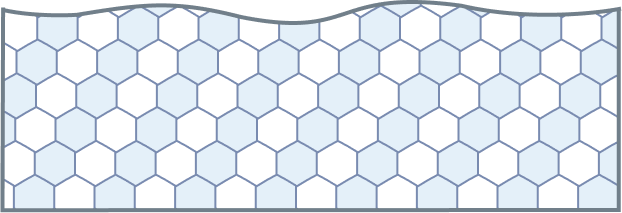
The easiest way to ensure you don’t experience any motion transfer is to opt for a sofa with individual cushions.
However, if you have a specific type of sofa – such as a four-seater with only two cushions – you’ll need to think about motion transfer.
In general, the better and higher density the foam, the less motion transfer you’ll experience. Go for memory foam cores if you want to reduce motion transfer to a minimum.
Click here if you want to explore Pocket Coil’s Motion Transfer.
Temperature
Temperature only really becomes a concern with foam cores if yours is made from memory foam.

However, these days they’re made so they will be able to regulate heat. Check the specific type of memory foam in your cushions and choose one that will keep your sofa or home theater seats breathable, cool, and comfortable at all times.
Click here if you want to explore Pocket Coil’s Temperature.
Pocket Coils
History of Pocket Coils
As we noted earlier, pocket coils have been used in mattresses since around the turn of the 20th century. However, with a variety of spring and foam alternatives available, it is only in recent years that they have grown in popularity and are now considered a mainstream product to include in a piece of furniture.
What are Pocket Coils?
In most coil cushions, the coils are joined. Pocket coils are different, in that they sit in cushions – or mattresses – as individual coils, wrapped in a fabric like cotton or wool in a pocket, hence their name.
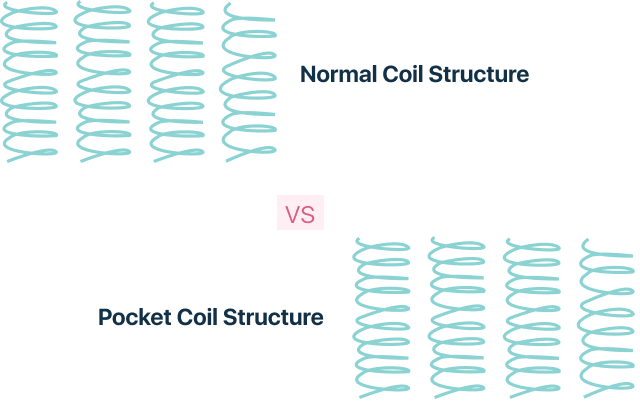
Some cushions that use pocket coils use a system called “zoning” to provide additional support for the neck and back areas. For example, in a sofa that uses pocket coils in its back cushion, you might be able to feel a firmer “spine” running vertically through the center of the cushion. This is where you get the extra support.

zone 1
zone 2
zone 3
zone 4
zone 5
Although this use of pocket coils is more commonly found in mattresses, it can be increasingly found in sofa cushions. Pocket coils are a great feature to make such sofas and cushions attractive alongside memory foam alternatives. Zoning can help to promote good posture and prevent how you sit leading to unnecessary aches and pains.
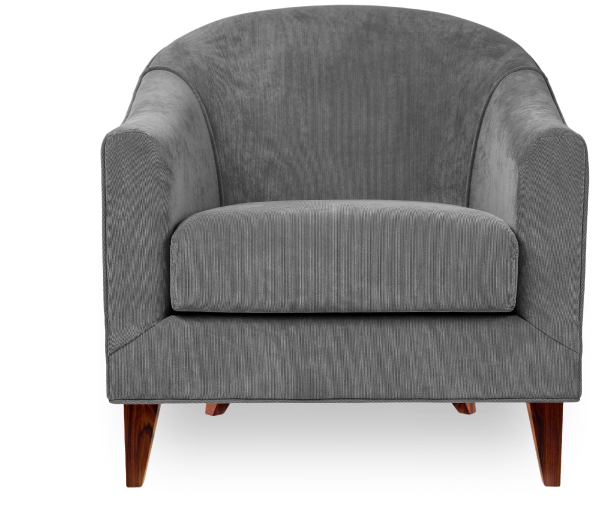
It’s important to note that you won’t just be sitting on
pocket coils wrapped in fabric when you buy pocket coil
cushions. The pocket coils will have a layer of foam
wrapped around them before the finish is applied.
While most pocket coil sofas and seats are advertised as such, some are
made differently and may even include memory foam in their
construction. When shopping around for furniture with pocket coils,
look out for products labeled as “hybrid cushions.”
You should also ask about the type of foam used in your pocket coil
cushions. This could have a significant bearing on the level of comfort
you enjoy.
Support
Pocket coils are the highest quality springs available, so you’ll enjoy a much higher support level than you would from other types of spring.
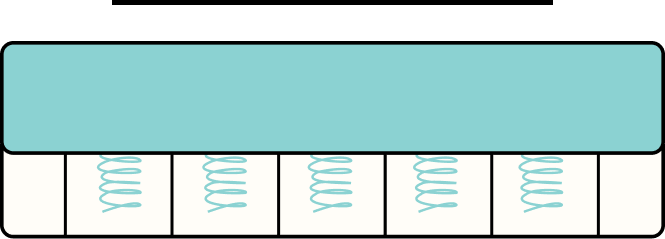
The most significant difference you’ll notice from pocket coil cushions is that the support feels more “active” than foam. While you’ll feel like you’re sinking into foam cushions, you’ll feel some resistance and push back from pocket coils, but still enjoy an extraordinary level of support and comfort.
Coil springs will also regain their shape quickly after you get up. This characteristic makes these types of cushions an ideal choice if you spend a lot of time on your sofa or you like sitting in different places and aren’t worried about having your “spot” personally molded to your shape.
Cost
While pocket coils are the most expensive type of spring, you will usually be able to find pocket coil furniture even if you’re on a low budget. Of course, the more you can spend on your furniture, the better quality you can expect to enjoy. The highest quality pocket coil furniture will typically cost more even than the most expensive memory foam options.
Durability of Pocket Coils
Pocket coils last far longer than typical springs, which often lead to you needing new cushions in as little as five years.
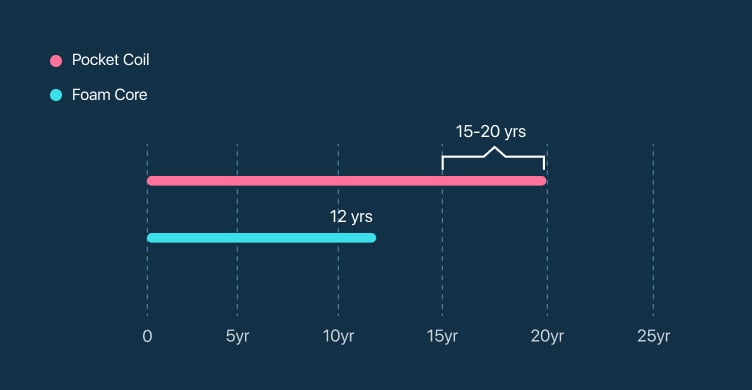
While you will be able to use high-density foam or memory foam cores for around 12 years, pocket coil cushions can last even longer. While even the highest quality, highest resilience foam will eventually start to sag, pocket coils are harder wearing. They typically won’t need replacing for 15 to 20 years. The higher levels of durability make the higher cost of pocket coils worth the investment!
Bounce
Pocket coil cushions will give you all a foam core’s responsiveness, but with far more bounce. This added bounciness results from the springs returning to their original shape quickly, versus the foam that takes you in and adapts to your body.

One potential drawback to keep in mind when you opt for pocket coil cushions is that your kids will love jumping up and down on them!
Given the several pocket coil cushions available and the different ways they can be wrapped in foam, we again recommend trying these at the store before you buy.
Motion Transfer
Traditional spring cushions deliver a lot of motion transfer, primarily due to the springs being connected. The nature of pocket coils, all being individually wrapped and acting alone, means this doesn’t happen when choosing these cushions. The only way a person would experience any motion transfer from a pocket coil is to sit so close together that you were on the same row of coils.


The lack of motion transfer, allied to the other attributes of pocket coils, makes these cushions an ideal choice for sofas with just one cushion, or two-cushion four-seaters.
Click here if you want to explore Foam Core’s Motion Transfer.
Temperature
Pocket coil cushions don’t trap much heat. If your priority is keeping cool, you might be able to find a high-quality piece of furniture using pocket coils at an equivalent price to a high-end memory foam one.
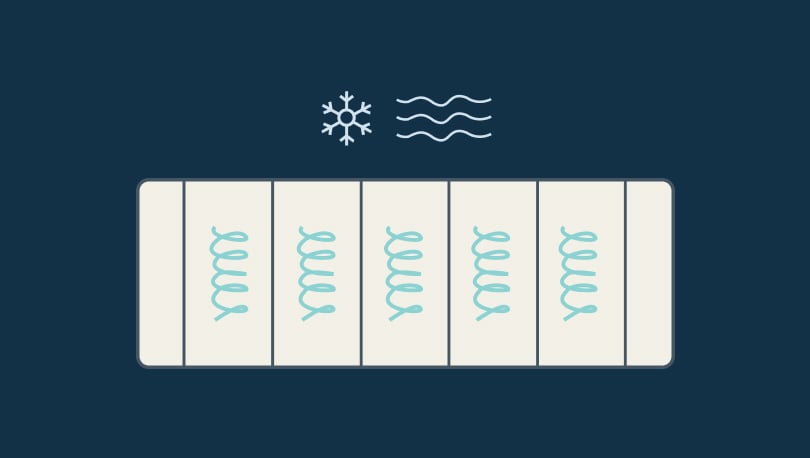
The difference is that with memory foam, you’ll be paying more for the additional features. In contrast, with pocket coils, everything you pay will be for the cushions’ quality.
While some pocket coil cushions will use memory foam, these will usually be constructed so there won’t be a significant effect on heat absorption and comfort.
Foam Cores vs.
Pocket Coils Which is Better?
your budget,
the long-term value is choosing a
new sofa or home theater seats with
pocket coils.
While you’ll pay a higher price for your furniture today, pocket coil cushions will last much longer than even the highest quality memory foam. As such, you’ll get to use your furniture much longer before you need to replace the cushions or the furniture itself.
However, that’s not to say you should feel like you’re buying something of low quality if your budget limits you to buying foam.
While memory foam cushions will deliver the best comfort and support of any foam, even a standard foam cushion will give you many benefits.
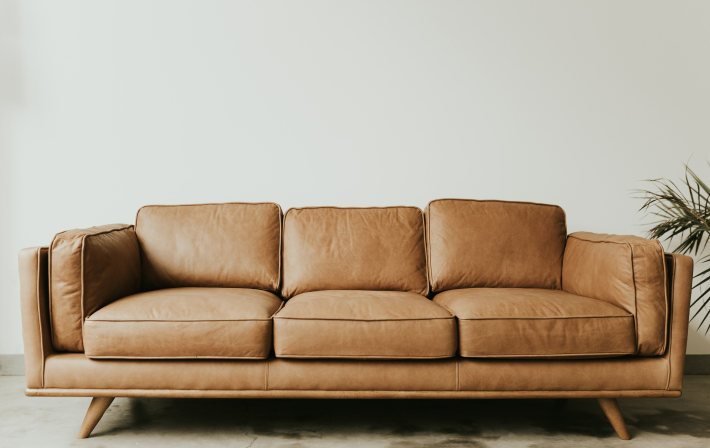
If you’re creating a home theater on a budget, for example, then foam cushions will make it easier for you to get it set up. If you’re buying a sofa rather than home theater seats, you could even explore the feasibility of replacing the foam cushions with pocket coils when you have the budget to do so.
Remember, you’re trying to find furniture that works for you, which also delivers the degree of comfort and support you want.
Still, if you can find a sofa or set of home theater seats with the highest quality pocket coils, we recommend this as your choice if your budget allows.
Depending on the types of furniture you’re looking at, you might even be able to find sofas and home theater seats that use a hybrid of pocket coils and foam or memory foam to deliver the ultimate in comfort and support.

